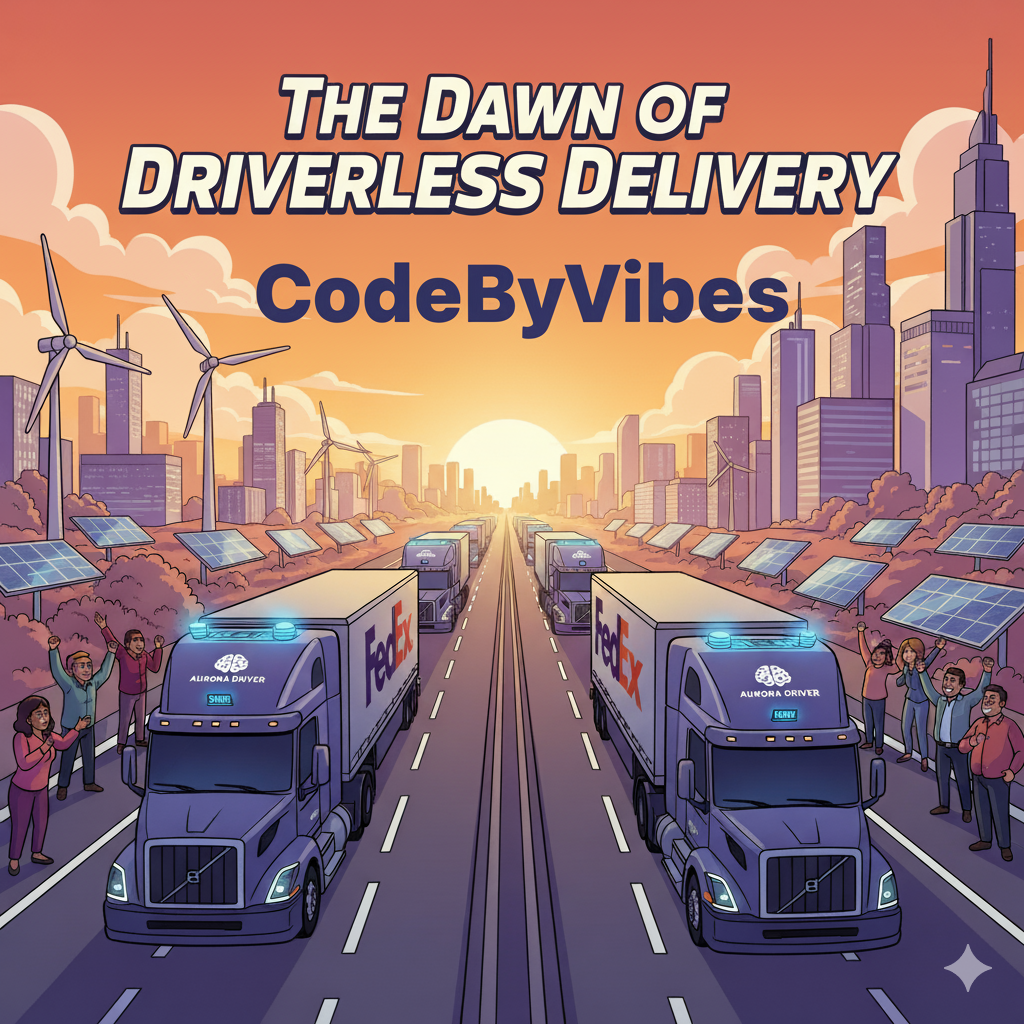The Dawn of Driverless Delivery: Is Aurora Steering the Future of Freight?
The hum of the highway is changing. While the roar of diesel engines remains, a new, quieter revolution is taking root, and a company named Aurora is in the driver’s seat—or, more accurately, has its AI in the driver’s seat. This isn’t science fiction anymore. Self-driving trucks are here, they’re hauling freight on public roads, and they’re poised to transform the trillion-dollar trucking industry. But as with any major technological leap, the road ahead is paved with both promise and peril.
Where the Rubber Meets the Road: Aurora’s Journey So Far
So, who is this new kid on the block? Aurora, a company with a clear mission to make transportation safer and more efficient, has been making significant strides in the autonomous trucking space. Their “Aurora Driver” system, a sophisticated combination of hardware and software, is the brains behind the operation. Featuring proprietary FirstLight lidar that can see over 450 meters ahead, the system gives the truck an 11-second advantage in spotting potential hazards compared to a human driver at night.
But this isn’t just a test-track project. Aurora is already on the road. They’ve logged over 50,000 driverless miles and are actively hauling customer loads in Texas, boasting a nearly 100% on-time delivery record. They’re not going it alone, either. Aurora has forged powerful partnerships with industry giants like FedEx, Uber Freight, and truck manufacturers Volvo and PACCAR, signaling a clear path to mass production and integration.
The Road Ahead: What’s Next for Aurora?
With a successful pilot program under their belt, Aurora is gearing up for a full-scale commercial launch. Their strategy is to integrate the Aurora Driver directly into their partners’ truck platforms, meaning we could soon see fleets of autonomy-enabled trucks rolling off the assembly line. The company’s focus is on scaling their operations, expanding their routes, and proving the economic and safety benefits of their technology to a wider market.
The Good, The Bad, and The Autonomous: What This Means for Us
The potential upside of this technology is immense. Proponents of autonomous trucking point to a future with:
- Enhanced Safety: The vast majority of accidents are caused by human error. Autonomous systems, with their 360-degree vision and lightning-fast reaction times, have the potential to make our roads significantly safer.
- Increased Efficiency: Trucks that can operate 24/7 without breaks for rest could dramatically speed up the supply chain, getting goods to shelves faster and potentially lowering costs for consumers.
- A Solution to Labor Shortages: The trucking industry has been facing a chronic driver shortage for years. Autonomous trucks could help fill this gap, ensuring the continued flow of goods across the country.
However, the road to an autonomous future isn’t without its bumps. Critics and concerned citizens raise valid points about:
- Job Displacement: The most immediate and significant concern is the potential for millions of truck driving jobs to be automated. This could have a profound impact on the livelihoods of many.
- Regulatory Hurdles: The legal and regulatory framework for autonomous vehicles is still in its infancy. Questions of liability in the case of an accident are complex and largely unanswered.
- The Unforeseen: While the technology is impressive, it’s not infallible. The consequences of a malfunction in a fully loaded, 80,000-pound autonomous truck are a sobering thought.
The journey of Aurora and the rise of the self-driving truck represent a pivotal moment in our technological evolution. It’s a classic tale of innovation, disruption, and the complex interplay between progress and its societal impact. As we stand at this crossroads, one thing is certain: the future of freight is arriving faster than you think.
Sources

